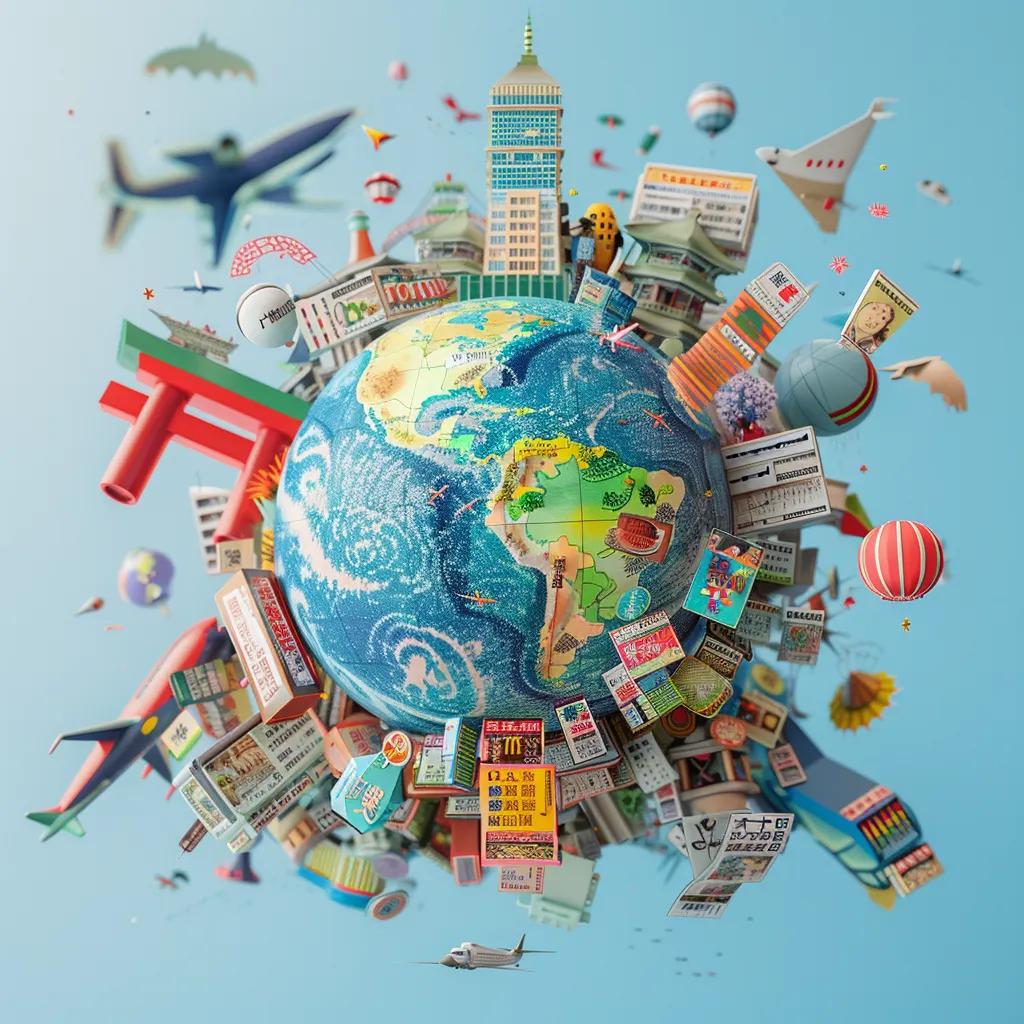Marketing Translation Services: Key to Global Ad Success

Reaching consumers worldwide demands more than literal language conversion; it requires marketing translation services that adapt brand messages to local contexts while preserving emotional impact. By transforming slogans, websites, and ad campaigns into culturally resonant content, marketing translation unlocks cross-border engagement, trust, and sales. In this guide, you will discover:
- What marketing translation services entail and how they fuel global advertising
- How transcreation elevates brand communication across cultures
- The key benefits of professional translation for expanding market reach
- Pitfalls of skipping expert translation and localization
- Methods for measuring and maximizing translation ROI
- Cutting-edge technology reshaping translation workflows
- Industry-specific translation considerations—from e-commerce to finance
Explore how targeted marketing translation for marketing ensures that your advertising resonates, converts, and sustains brand credibility in every language and region.
How Marketing Translation Services Power Global Advertising
Marketing translation services specialize in converting promotional content—such as taglines, product descriptions, and ad copy—into another language while retaining persuasive tone and brand identity. By combining linguistic accuracy with creative adaptation, these services enable global advertising campaigns to connect authentically with local audiences and drive measurable engagement.
How Is Marketing Translation Different from General Translation?
Marketing translation goes beyond word-for-word rendering by prioritizing context, emotional resonance, and brand consistency. General translation focuses on literal accuracy, whereas marketing translation integrates:
- Cultural nuance to avoid misinterpretation
- Tone and style adaptation for persuasive impact
- Audience-specific messaging to trigger desired responses
This creative approach ensures ads evoke the same feelings in all target markets, not just the correct information.
The Importance of Cultural Nuance in Marketing Translation
Marketing translation goes beyond simple word-for-word conversion, emphasizing the importance of cultural understanding to avoid misinterpretations and ensure the message resonates with the target audience. This approach is crucial for building trust and maintaining brand credibility in diverse markets.
Goddard, A., "The Language of Advertising" (2002)
This research supports the article's emphasis on the need for cultural sensitivity in marketing translation to ensure effective communication.
What Types of Content Are Included in Marketing Translation?
Marketing translation covers a wide array of promotional materials:
- Slogans and Taglines – Crafting memorable catchphrases that fit cultural idioms
- Websites and Landing Pages – Adapting user journeys, calls to action, and microcopy
- Social Media Posts and Ads – Localizing hashtags, emojis, and platform conventions
- Video Scripts and Voice-overs – Aligning visual storytelling with regional sensibilities
- Email Campaigns and Newsletters – Personalizing subject lines and content for higher open rates
Each content type demands a tailored strategy to maintain persuasive power and brand voice.
By handling diverse assets—from print banners to interactive microsites—marketing translation services ensure cohesive global messaging that drives local impact.
How Do Marketing Translation Services Enable Effective Global Advertising?
Marketing translation services enable global advertising by:
- Eliminating language barriers that impede message comprehension
- Embedding cultural insights to boost audience relevance
- Guaranteeing legal and regulatory compliance in each market
- Maintaining consistent brand identity across touchpoints
Ultimately, professional translation transforms campaigns into locally compelling experiences that convert prospects into customers and advocates.
How Does Transcreation Enhance Marketing Translation for Global Brands?

Transcreation combines translation and creative copywriting to reframe a message concept for a new audience. It ensures not only linguistic accuracy but also emotional equivalence, which is essential for brand storytelling in international markets.
What Is Transcreation and When Should It Be Used Over Direct Translation?
Transcreation is the process of reimagining marketing content—such as slogans, headlines, or ad narratives—so that it evokes equivalent emotions and cultural cues in the target language. Use transcreation instead of direct translation when:
- The original message relies on wordplay, idioms, or cultural references
- Emotional impact is central to campaign goals
- Brand voice requires creative adaptation for local resonance
Transcreation often involves ideation, copywriting, and cultural research to preserve brand essence.
The Role of Transcreation in Global Advertising
Transcreation, which combines translation and creative copywriting, is essential for adapting brand messages to local cultures. This approach ensures that the emotional impact of the original message is preserved, leading to more effective campaigns.
Cronin, M., "Translation and Globalization" (2003)
This research supports the article's discussion of transcreation and its importance in adapting brand messages for global audiences.
How Does Transcreation Adapt Brand Messages to Local Cultures?
- Conducting cultural audits to understand taboo topics and humor thresholds
- Rewriting copy to align with local values, idioms, and storytelling conventions
- Adjusting visuals, colors, or symbols that carry cultural significance
- Collaborating with native creative teams to ensure authenticity
These steps guarantee that a campaign’s emotional core remains intact and resonates deeply with new audiences.
What Are the Key Benefits of Marketing Translation for Expanding Global Reach?

Professional marketing translation delivers strategic advantages that accelerate international growth. From broadening audience reach to boosting ROI, the following benefits underscore the value of expert language services.
How Does Marketing Translation Expand Market Footprint and Customer Base?
Marketing translation expands market footprint by removing language barriers and enabling brands to:
- Engage new demographics in emerging markets
- Tailor messaging for niche segments and regional dialects
- Leverage localized SEO keywords to drive organic traffic
Statistics show that companies offering content in customers’ native languages experience up to 2× higher conversion rates and a 30% increase in engagement on multilingual websites.
Benefits of Marketing Translation for Global Reach
Companies that offer content in their customers' native languages often experience higher conversion rates and increased engagement on multilingual websites. This highlights the direct impact of translation on market expansion and customer acquisition.
Wüest, H., "Translation and Localization: A Comprehensive Guide" (2013)
This citation reinforces the article's claims about the positive effects of marketing translation on conversion rates and customer engagement.
How Does Accurate Translation Build Brand Credibility and Trust?
Accurate, culturally sensitive translation fosters trust by:
- Ensuring error-free messaging that reflects professionalism
- Respecting local norms and legal standards to avoid offense
- Consistently reinforcing brand personality across languages
Trust anchors long-term loyalty—and consistent translation quality signals reliability and care.
How Does Culturally Relevant Messaging Drive Customer Engagement and Loyalty?
When marketing content aligns with local values and references, brands:
- Spark emotional connections that encourage sharing and advocacy
- Increase time spent on digital channels through relatable storytelling
- Strengthen repeat purchase rates by speaking directly to cultural preferences
Localized campaigns see up to 50% more social media interactions compared to one-size-fits-all approaches.
How Does Marketing Translation Help Navigate Cultural Nuances and Avoid Missteps?
By combining linguistic expertise with cultural intelligence, professional translators:
- Identify sensitive topics, symbols, and color associations
- Pre-test copy with local focus groups to catch unintended meanings
- Apply transcreation to reframe content that might offend or confuse
Proactive cultural risk mitigation safeguards brand reputation and sustains audience goodwill.
What Challenges Do Global Advertisers Face Without Professional Marketing Translation?
Skipping expert translation exposes advertisers to a range of pitfalls that can undermine campaign effectiveness and brand integrity.
How Do Linguistic Barriers and Misinterpretations Impact Advertising?
Without tailored translation:
- Messages can become awkward or nonsensical, eroding credibility
- Key benefits may be lost, reducing persuasive power
- Search engines may penalize poorly localized content, harming SEO
These issues translate into lower engagement, wasted ad spend, and missed opportunities.
What Are the Risks of Cultural Insensitivity and Backlash?
Ignoring local norms can lead to:
- Offense or public relations crises triggered by taboo references
- Social media backlash that spreads rapidly across markets
- Regulatory fines in regions with strict advertising standards
Professional translation teams prevent such scenarios through cultural audits and pre-launch reviews.
How Can Legal and Regulatory Non-Compliance Affect Global Campaigns?
Different countries impose unique requirements on advertising language, disclosures, and claims. Non-compliance may result in:
- Campaign bans or forced withdrawals
- Financial penalties and litigation costs
- Damage to brand credibility and consumer trust
Expert translators ensure every tagline and claim adheres to local laws and industry regulations.
How Does Inconsistent Brand Messaging Harm Global Advertising Efforts?
When translation is handled ad hoc:
- Brand voice fragments, leading to confusing customer experiences
- Inconsistent terminology undermines brand recognition
- Teams lose efficiency without centralized glossaries and style guides
Centralized marketing translation services preserve unified brand identity at scale.
What Market Opportunities Are Missed Without Proper Translation?
Without strategic localization, brands forfeit:
- Access to high-growth emerging markets
- Engagement with non-English-speaking segments that prefer local language
- Competitive advantage over players investing in authentic localization
Professional translation unlocks these untapped revenue streams and amplifies global reach.
How Can Businesses Measure and Maximize the ROI of Marketing Translation?
Quantifying translation ROI involves tracking targeted metrics and analyzing real-world case studies to justify investment and optimize workflows.
What Key Performance Indicators (KPIs) Track Translation ROI?
Effective KPIs include:
- Localized Conversion Rate: Percentage of target-market visitors converting after translation
- Average Session Duration: Measure of content relevance and engagement
- Bounce Rate Reduction: Indicator of improved user experience
- Cost per Acquisition (CPA): Comparison of localized vs. non-localized campaigns
- Return on Ad Spend (ROAS): Revenue generated per ad dollar in local language markets
Tracking these metrics provides clear insight into translation’s impact on performance.
What Is the Cost-Benefit Analysis of Professional Translation Services?
While in-house or machine-only approaches reduce upfront costs, professional services offer:
- Higher quality: Reduced rework and brand risk
- Speed and scalability: Teams of specialists handling volume spikes
- Consistency: Centralized glossaries and translation memory savings
Over time, investment in expert translation yields net savings through improved efficiency, brand equity, and revenue growth.
How Is Technology Transforming Marketing Translation Services?
Advancements in AI, machine translation, and data-driven workflows are reshaping the marketing translation landscape, boosting speed without sacrificing quality.
What Role Does AI and Machine Translation Play in Marketing Translation?
Neural machine translation (NMT) accelerates initial drafts by learning context and style patterns. AI helps to:
- Produce consistent translations at scale
- Identify terminology mismatches through automated QA
- Integrate with CMS and marketing platforms for seamless localization
When combined with human review, AI drives cost reductions of 30–50% while maintaining linguistic quality.
How Does Human Post-Editing Ensure Quality in Machine Translation?
Machine Translation Post-Editing (MTPE) engages experienced linguists to:
- Correct inaccuracies and preserve brand voice
- Adapt phrasing for cultural relevance
- Verify compliance with style guides and legal standards
This hybrid model balances speed and precision for high-impact campaigns.
How Do Computer-Assisted Translation (CAT) Tools Improve Consistency?
CAT platforms centralize terminology, translations, and style guidelines to:
- Enforce consistent usage of key brand terms across projects
- Leverage translation memory to reuse approved segments
- Facilitate collaboration among disparate teams
CAT technology underpins efficiency and coherence in multilingual workflows.
How Does Structured Data Enhance Multilingual SEO for Marketing Content?
Embedding structured data (Schema.org markup) in translated pages allows search engines to:
- Understand content type, language, and targeted service areas
- Feature rich snippets such as FAQs and service offerings
- Boost visibility for local search queries
Combining marketing translation with structured data practice maximizes SEO impact in new markets.
How Are Marketing Translation Services Tailored for Specific Industries?
Industry verticals demand specialized translation approaches that address unique regulatory, technical, or cultural requirements.
What Are the Unique Needs of E-commerce Marketing Translation?
E-commerce localization focuses on:
- Translating product titles, descriptions, and user reviews accurately
- Adapting pricing, promotions, and payment terms to local norms
- Optimizing site search keywords for regional shopping habits
Tailored translation ensures frictionless shopping experiences and higher transaction completion rates.
How Does SaaS Marketing Benefit from Specialized Translation Services?
For software as a service providers:
- UI and UX copy must be localized for intuitive interfaces
- Technical documentation requires precise terminology translation
- In-app notifications and support articles need consistent style
Expert translators bridge the gap between technical accuracy and persuasive marketing language.
What Are the Considerations for Healthcare Marketing Translation?
- Strict adherence to regulatory standards and medical guidelines
- Accurate translation of dosage instructions, contraindications, and claims
- Culturally sensitive messaging for patient trust and compliance
Professional linguists with medical expertise mitigate risk and ensure patient safety.
How Is Financial Services Marketing Translation Different?
- Precise rendering of legal disclosures, financial terms, and compliance notices
- Confidential handling of sensitive data under local privacy laws
- Localization of calculators, interest rates, and investment product details
Specialized translators combine industry knowledge with linguistic skill to preserve accuracy and trust.
Professional marketing translation services transform global advertising campaigns into culturally resonant experiences, driving higher engagement, brand credibility, and return on investment. By integrating transcreation, advanced technology, and industry-specific expertise, businesses can overcome language and regulatory barriers while safeguarding consistency and compliance. Measuring success through targeted KPIs and leveraging data-driven workflows ensures that each translated asset delivers measurable impact. Investing in translation for marketing isn’t just converting words—it’s unlocking worldwide growth.








